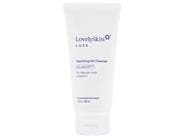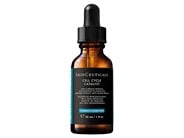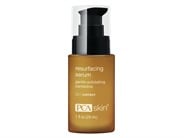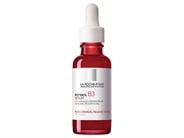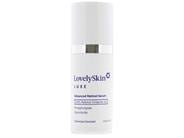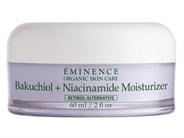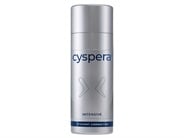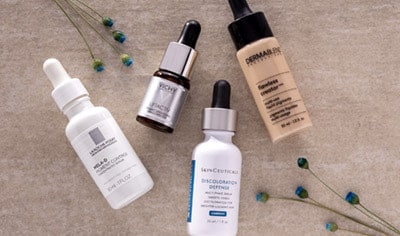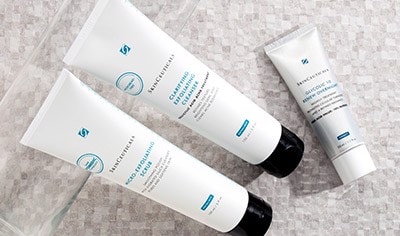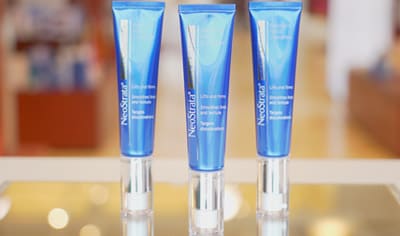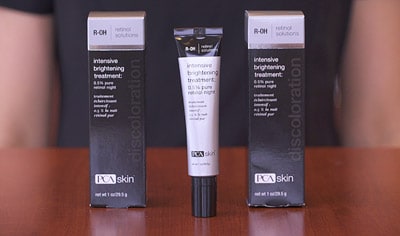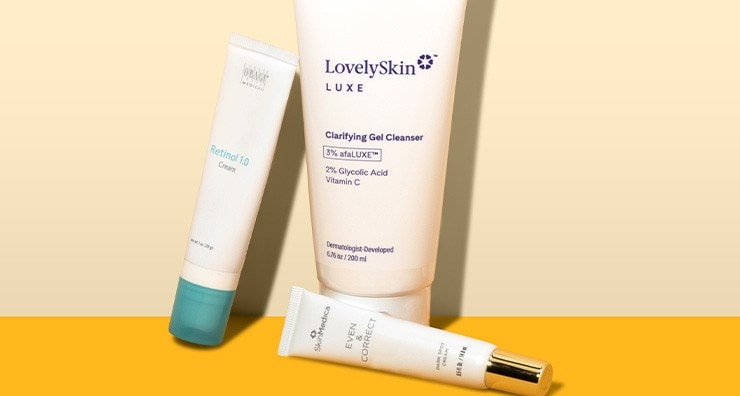
Dermatologists agree that glycolic acid and retinol are two of the most important ingredients in preventing and treating signs of aging, but what exactly do they do? When considering glycolic acid vs. retinol, how do you know which is right for your skin type? We’re breaking down everything you need to know about glycolic acid and retinol, including:
Are there any newer alternatives to glycolic acid and retinol?
Glycolic acid vs. retinol: Which will work best for your skin concerns?
At a glance: Glycolic acid vs. retinol vs. afaLUXE

What does glycolic acid do?
Glycolic acid is a water-soluble alpha hydroxy acid derived from sugar cane that is a common ingredient featured in a variety of skin care products, from cleansers to exfoliators. “I have always been a huge proponent of glycolic acid as it is a chemical exfoliator, which means it doesn't strip the skin of its natural oils,” says LovelySkin CEO Dr. Joel Schlessinger, board-certified dermatologist, Mohs surgeon and cosmetic surgeon. “Instead, glycolic acid works by gently loosening the dead layer of skin on the surface, revealing the glowing epidermis below.” Since glycolic acid helps slough off the top layer of dead skin cells, it also allows for better penetration of your face treatment products, making it effective in treating issues with skin discoloration, acne and rough texture.
Using a daily facial cleanser, such as LovelySkin LUXE Clarifying Gel Cleanser, is an easy way to start benefiting from the exfoliating benefits of glycolic acid. In this formula, 2% glycolic acid teams up with 2% salicylic acid and 3% afaLUXE, a dermatologist-developed molecule of amino-based filaggrin antioxidants with vitamin C and Dead Sea minerals. “This is a wonderful cleanser for just about anyone, thanks to its gentle yet effective exfoliating power,” Dr. Joel Schlessinger says.
Incorporating an anti-aging face serum, such as SkinCeuticals Cell Cycle Catalyst, is another way to incorporate glycolic acid into your skin care routine. This formula features 1% taurine to boost skin cell renewal cycles and a 7.7% multi-acid complex that includes glycolic acid as well as salicylic, mandelic and phytic acids. Together, these ingredients help fade discoloration, reduce the appearance of blemishes and fine lines and increase radiance.
Another multitasking glycolic acid product you may want to consider is PCA Skin Resurfacing Serum. This facial serum is formulated to deliver a triple threat of benefits by hydrating, calming and resurfacing the skin, improving both uneven skin tone and texture with glycolic acid and licorice root extract.
What does retinol do?
Retinol is a derivative of vitamin A and comes in a multitude of strengths and iterations. Considered the gold standard in effective anti-aging, retinol helps encourage cellular turnover deep beneath the skin to help boost collagen production, which in turn improves the look of wrinkles, sun damage, large pores, acne and more.
However, retinol is not a one-size-fits-all type of skin care ingredient. In its strongest concentrations, retinol has been known to irritate the skin’s moisture barrier, resulting in flaking, dryness and skin redness. New retinol users should start with a lower concentration of retinol, such as La Roche-Posay Retinol B3 Serum, and work up to higher percentages as skin adapts. This retinol serum features 0.3% retinol matched with hydrating hyaluronic acid and soothing niacinamide.
The next step up in concentration could be LovelySkin LUXE Advanced Retinol Serum. This formula contains 0.5% retinol to promote cell turnover while helping prevent the typical side effects of dryness and irritation with a blend of glycolipids and phospholipids.
Once you've successfully tried low-concentration retinols in the 0.25-0.5% range, you can work your way up to higher percentages for more advanced treatment. Intended for experienced retinol users, Obagi Retinol 1.0 Cream helps fade the appearance of fine lines, wrinkles and dark spots over time with 1% time-released retinol.
“Most people do very well with retinol and tolerate it better than Retin-A or other prescription products, though it isn’t as strong or effective as prescription Retin-A (tretinoin). However, some of my patients won’t even acclimate to retinol,” Dr. Joel Schlessinger says. “For them, I recommend products with a gentler retinol alternative such as bakuchiol.” Derived from the seeds of the babchi plant, bakuchiol offers some of the same benefits of retinol—improving fine lines, wrinkles and skin texture—at a more gradual pace with less irritation. Eminence Organics Bakuchiol + Niacinamide Moisturizer matches bakuchiol with soothing ingredients such as aloe leaf juice and vitamin E. In a 12-week consumer study, 100% of users agreed that their skin did not get irritated like it had in the past with retinol use.
Are there any newer alternatives to glycolic acid and retinol?
“The problem that I often hear with glycolic acid or retinol is that they can cause irritation and dryness,” says Dr. Joel Schlessinger. To help solve this problem, he worked with board-certified dermatologist Dr. Marvin E. Klein over 30 decades ago to develop afaLUXE™, a novel ingredient that is a newer alternative to glycolic acid and retinol. afaLUXE™ is made from amino-based filaggrin antioxidants combined with vitamin C and Dead Sea minerals. “What’s unique about afaLUXE™ is that it exfoliates and promotes cellular turnover without the irritation and dryness you might experience with glycolic acid or retinol,” Dr. Joel Schlessinger says. “afaLUXE is derived from the bud of the sugar cane plant and that makes it more powerful than glycolic acid, which is made from the mature stalks of sugar cane.”
You’ll find afaLUXE™ in LovelySkin LUXE’s line of exfoliating gels, which can be used to clear acne, diminish fine lines and wrinkles, reduce signs of sun damage and increase collagen production. The exfoliating gels with afaLUXE™ come in several concentrations, starting with 9% afaLUXE™ in the LovelySkin LUXE Acne Care Gel and going all the way up to 19% in the LovelySkin LUXE Exfoliating Gel Max. “These are step-up products, so I recommend my patients start with the lowest concentration of afaLUXE™ and move up to the next if their skin tolerates it well.”
Glycolic acid vs. retinol vs. afaLUXE
When deciding between glycolic acid, retinol and afaLUXE™, there are a few things to consider, such as your age, skin type and any skin conditions you struggle with.
When considering glycolic acid vs. retinol, glycolic acid is a milder skin care ingredient in comparison to retinol, making it easier to try first. You can start by incorporating a glycolic acid product into your daily routine as a teenager with acne or when you’re in your twenties. By your thirties, you should consider adding in a retinol into your skin care regimen to help combat the slowing down of collagen and elastin production.
All skin types can generally tolerate afaLUXE™, and it can be an especially good choice for those with sensitive or acne-prone skin. “Because afaLUXE helps exfoliate dead skin cells and clear clogged pores while preserving proper moisture levels in the skin, it prevents the common side effect of dryness and irritation that can result from traditional acne treatments,” Dr. Joel Schlessinger says. “For this reason, it’s an ingredient I recommend to my teenage acne patients, and I’ve seen great results when it comes to resolving existing breakouts and preventing new ones in younger patients.”
It’s also important to consider how each ingredient uniquely benefits the skin. “Glycolic acid sloughs away dead skin cells on the surface, revealing fresher cells beneath, whereas retinol works on a deeper level to encourage skin cell turnover as well as collagen and elastin production,” Dr. Daniel Schlessinger. “On the other hand, afaLUXE gently exfoliates as well as increases collagen production and has the added benefit of maintaining proper moisture balance in the skin.”
Can you use glycolic acid and retinol together? What about afaLUXE™?
If all three ingredients improve skin, can you use glycolic acid, retinol and afaLUXE™ together to reap all the benefits? The short answer is that it is possible to use them all safely in your skin care routine, albeit with a few guidelines to keep in mind.
“If you’re not currently using any of these ingredients, I don’t recommend starting glycolic acid, retinol and afaLUXE™ all at the same time,” Dr. Daniel Schlessinger says. “You can start slow by alternating between them and working up to applying one of them nightly. Some amount of peeling, flaking and redness is normal, but if it seems extreme or is very uncomfortable, stop using them and see your dermatologist for guidance.” However, just because you can safely use all three of these ingredients together doesn’t mean you need to. “Some patients enjoy and tolerate using a glycolic acid cleanser, afaLUXE™ exfoliating gel and retinol night cream,” Dr. Joel Schlessinger says. “If the dryness associated with retinol and glycolic acid is uncomfortable for you, you may be a good candidate to use afaLUXE™ alone. It may take a bit of experimentation to find the right balance.”
Can you mix glycolic acid and retinol? What about afaLUXE™?
If you’re trying to save time with your skin care routine, you might be wondering if you can safely mix your glycolic acid, retinol and afaLUXE™ products together to apply them at once. “I wouldn’t recommend mixing your standalone glycolic and retinol creams together to use simultaneously as that could cause chemical interactions that might affect the ingredients themselves,” Dr. Joel Schlessinger says. “However, there are some skin care products that are specifically formulated to have both retinol and glycolic acid or glycolic acid and afaLUXE™ at the same time at concentrations that work well together. If you’ve tolerated these ingredients separately in the past, you could try a product that combines them.”
One of the best products that contains both glycolic acid and afaLUXE is LovelySkin LUXE Clarifying Gel Cleanser. This formula contains 2% glycolic acid and 3% afaLUXE™ as well as 2% salicylic acid to help clear clogged pores and reduce inflammation caused by breakouts without overdrying the skin.
To specifically target discoloration, one of our go-to products that combines both glycolic acid and retinol is SkinMedica Even & Correct Dark Spot Cream. The team at SkinMedica created this spot treatment to help fade the appearance of dark spots and acne scars. In addition to 0.25% retinol and glycolic acid, it also features 8% LTN Complex™, a proprietary blend of tranexamic acid, niacinamide and lotus sprout extract that addresses skin discoloration. It can be used solo or as part of SkinMedica’s three-step Even & Correct system.
To achieve the benefits of an exfoliating facial while you sleep, consider Allies of Skin Multi Acids & Retinoid Brightening Sleeping Facial. This overnight facial peel features 7% glycolic acid and a 1% retinoid complex to address discoloration and uneven texture while supporting ingredients, like hyaluronic acid and niacinamide, help boost moisture retention.
If you struggle with melasma, hyperpigmented scars or post-acne marks, the Cyspera Intensive Pigment Corrector with Cysteamine Isobionic-Amide Complex also features the dynamic duo of glycolic acid and retinol. Matched with Cyspera’s proprietary Cysteamine Isobionic-Amide Complex, which reduces melanin production, these ingredients work together to reveal brighter, more even-looking skin.
Want to learn more about retinol or glycolic acid? You can get the answers to your top retinol questions and find out more about the benefits of glycolic acid on the LovelySkin Blog.

About the Author
Aaron serves as Editor at LovelySkin. Since graduating from the University of Nebraska at Omaha in 2016 with degrees in Creative Writing and English, he has immersed himself in the beauty industry. When he’s not writing about the latest beauty trends, he spends time cuddling his dogs, scouring antique stores, playing tennis and hiking.
Other Posts by AaronComplete your antioxidant routine with L...
How to protect hair from chlorine damage...
Follow us on social
Follow us on social networks and be one of the first to learn about sales, giveaways, and free samples

